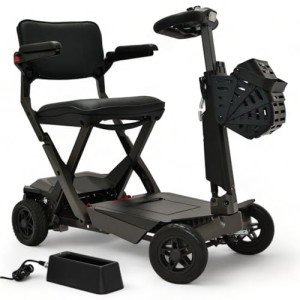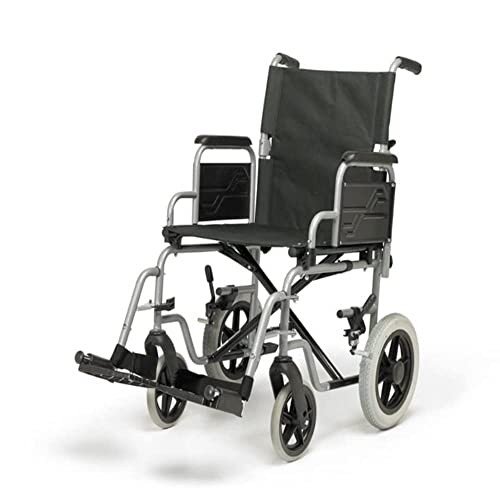Navigating the World of Mobility Scooters: A Comprehensive GuideIn an age where mobility is significantly recognized as a fundamental aspect of quality of life, the demand for assistive devices has risen. Amongst these, mobility scooters stand apart as a flexible and empowering choice for individuals with mobility challenges. This detailed guide looks into the world of mobility scooters, offering insights into their types, advantages, purchasing considerations, and upkeep tips. Understanding Mobility ScootersMobility scooters are motorized automobiles designed to assist individuals with mobility issues in moving around more easily and independently. They are particularly beneficial for those who discover walking difficult due to conditions such as arthritis, numerous sclerosis, or post-surgical recovery. Unlike manual wheelchairs, mobility scooters need very little physical effort, making them an exceptional choice for extended usage.Kinds Of Mobility Scooters
Understanding Mobility ScootersMobility scooters are motorized automobiles designed to assist individuals with mobility issues in moving around more easily and independently. They are particularly beneficial for those who discover walking difficult due to conditions such as arthritis, numerous sclerosis, or post-surgical recovery. Unlike manual wheelchairs, mobility scooters need very little physical effort, making them an exceptional choice for extended usage.Kinds Of Mobility Scooters
- Three-Wheel Scooters
- Pros: More maneuverable, lighter, and simpler to save.
- Cons: Less steady on rough terrain.
- Best For: Indoor and smooth outdoor surface areas.
- Four-Wheel Scooters
- Pros: More stable, much better on rough terrain, and can carry much heavier loads.
- Cons: Bulkier and less maneuverable.
- Best For: Outdoor use, specifically in parks and on uneven surface areas.
- Portable Scooters
- Pros: Lightweight, foldable, and simple to transport.
- Cons: Limited range and speed.
- Best For: Travel and occasional use.
- Heavy-Duty Scooters
- Pros: Built to handle heavier users and rugged environments.
- Cons: More expensive and less portable.
- Best For: Users over 300 pounds or those who require to navigate rough terrain.
- Standing Scooters
- Pros: Provide a standing position, which can be useful for users who can not sit for extended periods.
- Cons: Limited stability and range.
- Best For: Users who choose standing and require short-distance support.
Benefits of Mobility Scooters
- Boosted Independence
- Mobility scooters permit users to take a trip longer ranges without fatigue, enabling them to take part more completely in daily activities and gatherings.
- Improved Safety
- With features like safety belt, anti-tip wheels, and brake systems, mobility scooters use a more secure alternative to manual wheelchairs and strolling help.
- Convenience and Support
- Adjustable seats, backrests, and armrests make sure a comfy trip, lowering the pressure on the user’s body.
- Cost-Effective
- While the preliminary financial investment can be significant, mobility scooters are typically more economical in the long run compared to regular taxi rides or specialized transport services.
- Social Inclusion
- Mobility scooters assist in higher social interaction by enabling users to take part in community activities and keep a more active lifestyle.
Factors to Consider When Buying a Mobility Scooter
- User Needs and Abilities
- Examine the user’s physical condition, mobility needs, and everyday activities to identify the most ideal type of scooter.
- Size and Weight Capacity
- Guarantee the scooter can accommodate the user’s size and weight comfortably and safely.
- Variety and Speed
- Think about the normal distance and speed needed for daily usage. Some scooters have a variety of up to 30 miles on a single charge.
- Mobility
- If travel is a concern, go with a portable scooter that can be easily disassembled and transferred.
- Upkeep and Support
- Choose a trusted maker that uses reliable customer support and maintenance assistance.
- Spending plan
- Set a spending plan and explore choices that provide the very best worth for money. Think about financing options and possible insurance coverage.
Maintenance Tips for Mobility Scooters
- Routine Cleaning
- Tidy the scooter frequently to avoid dirt and particles from affecting its performance. Utilize a soft cloth and moderate detergent.
- Battery Maintenance
- Follow the manufacturer’s guidelines for battery charging and upkeep. Frequently inspect the battery level and prevent deep discharges.
- Tire Inspection
- Examine the tires for wear and correct inflation. Replace or fix as required to guarantee a smooth and safe trip.
- Lubrication
- Lube moving parts such as the chain and gears to minimize friction and avoid wear.
- Expert Servicing
- Arrange routine expert maintenance to deal with any concerns and make sure the scooter remains in optimal condition.
Frequently Asked Questions About Mobility Scooters
- Are mobility scooters covered by insurance coverage?
- Some insurance strategies, consisting of Medicare, may cover the cost of mobility scooters under certain conditions. Consult your provider for specific details.
- Can I use a mobility scooter indoors?
- Yes, many mobility scooters are designed for both indoor and outside usage. Make sure the scooter appropriates for the kind of surface areas you will be navigating.
- How fast can mobility scooters go?
- The speed differs by model, however a lot of mobility scooters have an optimal speed of 4 to 8 miles per hour.
- Do I need a license to operate a mobility scooter?
- In the majority of countries, a license is not needed to run a mobility scooter. Nevertheless, it is very important to follow regional regulations and traffic laws.
- Can I take a trip with a mobility scooter?
- Lots of mobility scooters are designed to be portable and can be dismantled for travel. Contact airline companies and transport companies for particular requirements.
Mobility scooters are a transformative tool for people with mobility difficulties, using a mix of self-reliance, safety, and convenience. By comprehending the various kinds of scooters, thinking about crucial acquiring elements, and following upkeep best practices, users can maximize their mobility scooter and lead a more active and satisfying life. Whether for everyday commutes or leisurely outings, Buying A Mobility Scooter well-chosen mobility scooter can be an important companion on the journey to enhanced mobility and quality of life.










